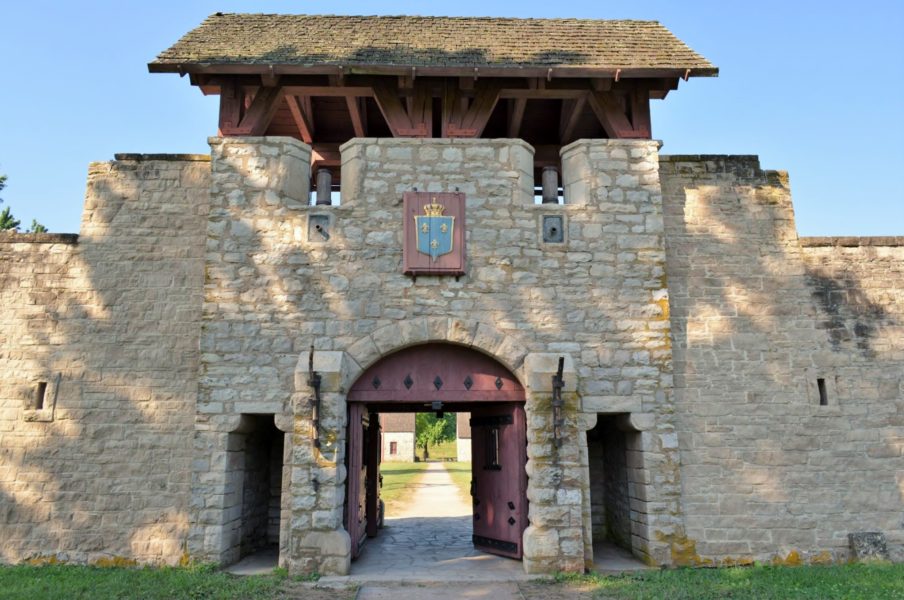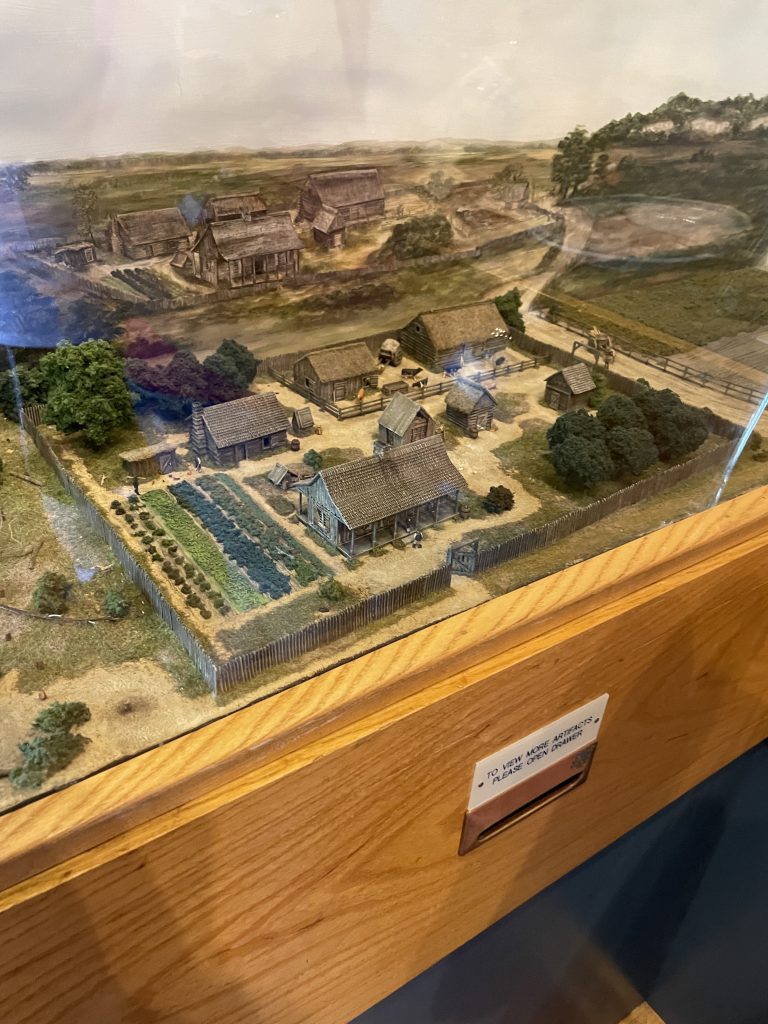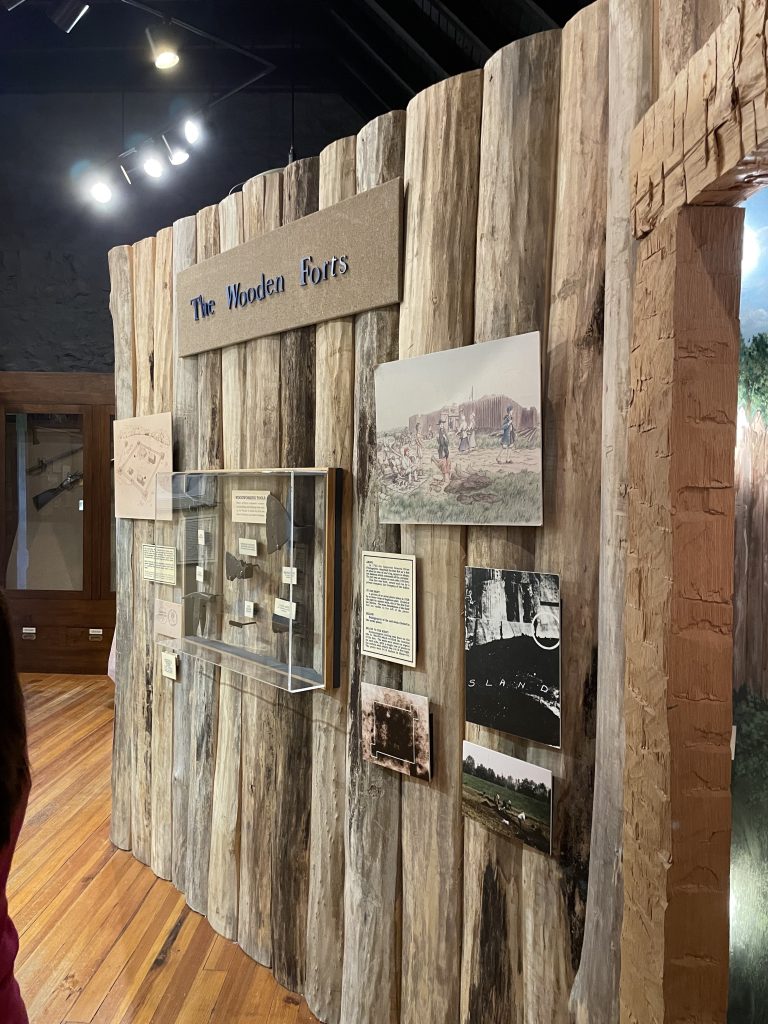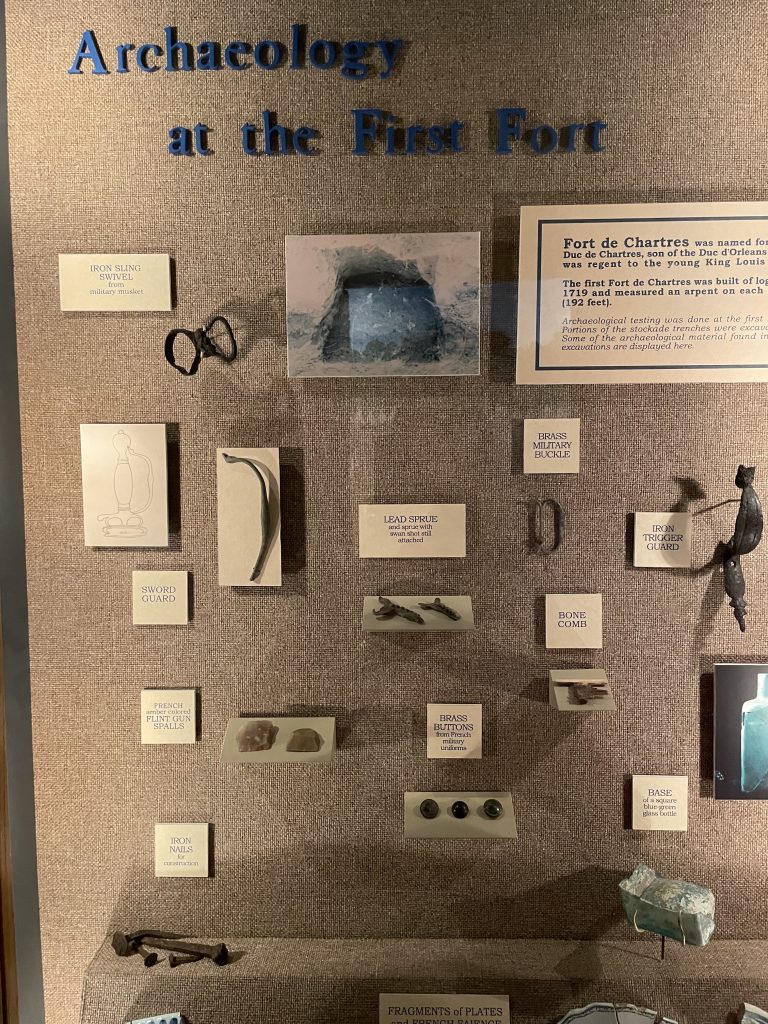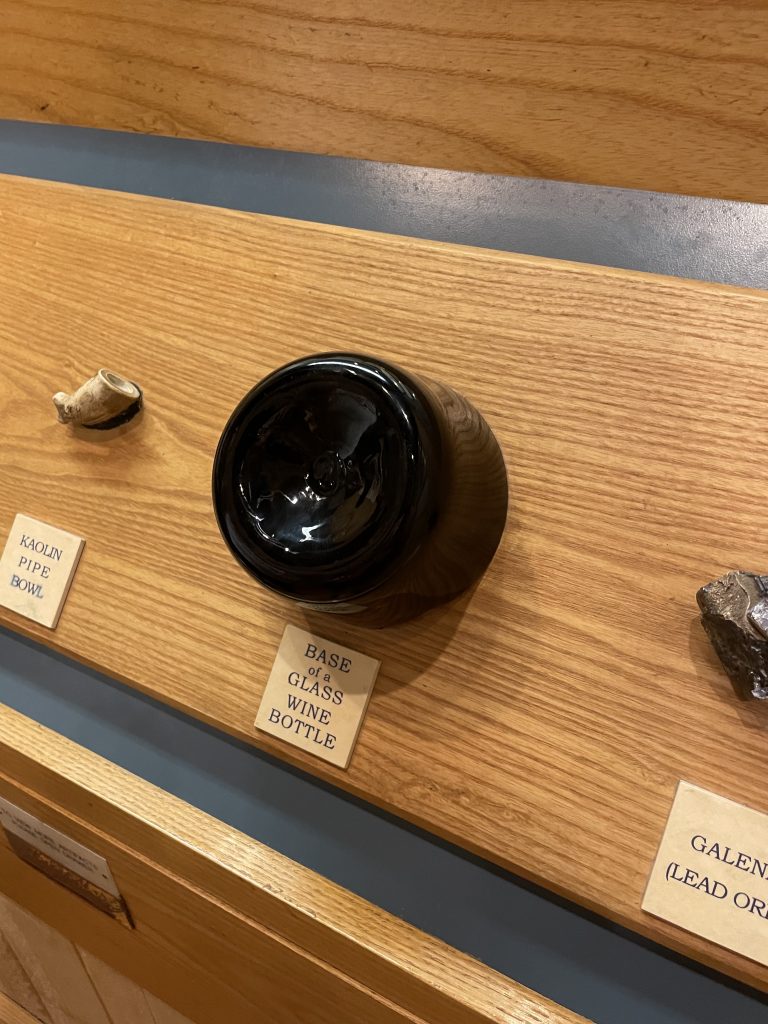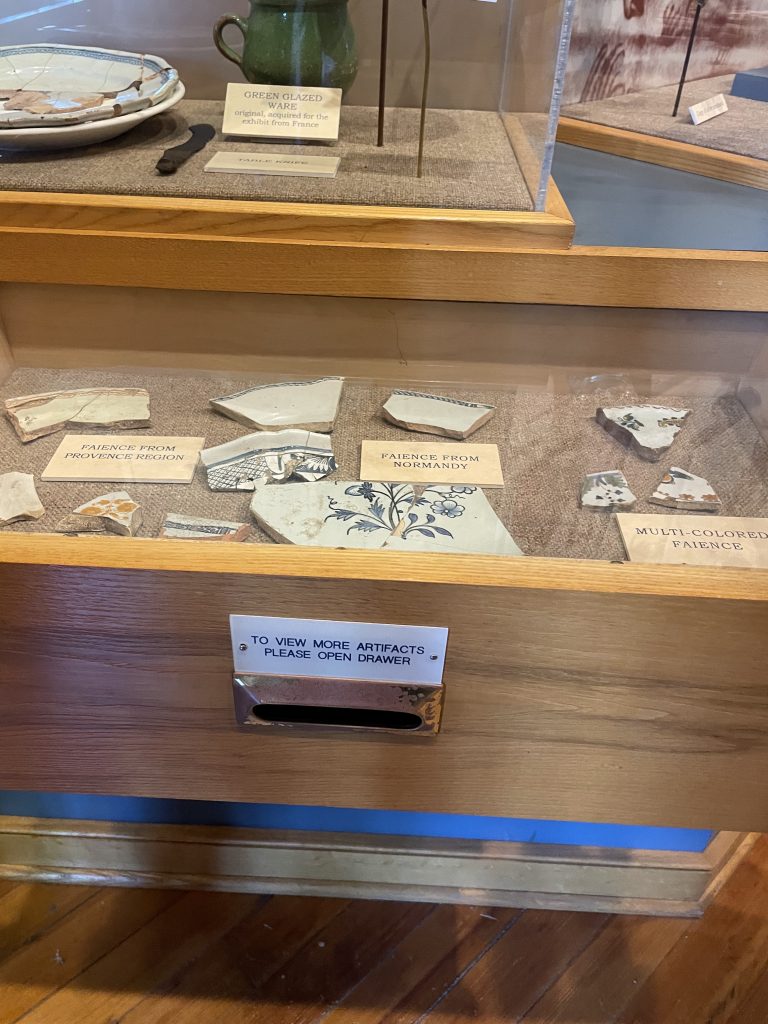I had never been to the St. Louis Art Museum and had my partner come along on July 11th. As we walked up to the building, I was in awe of the magnitude and of its view overlooking a large body of water with fountains, known as ‘Art Hill’. Once I walked in, I continued to absorb the atmosphere. Once I was handed the map, I was focused on going to the Ancient Egyptians exhibit on the third floor. However, I found myself wondering the vast rooms and the seemingly, never-ending hallways of art. As I did, I caught a room full of ceramic vessels. I thought it fitting and smiled to myself as I entered a well lit and modestly presented room of South American ceramic vessels.
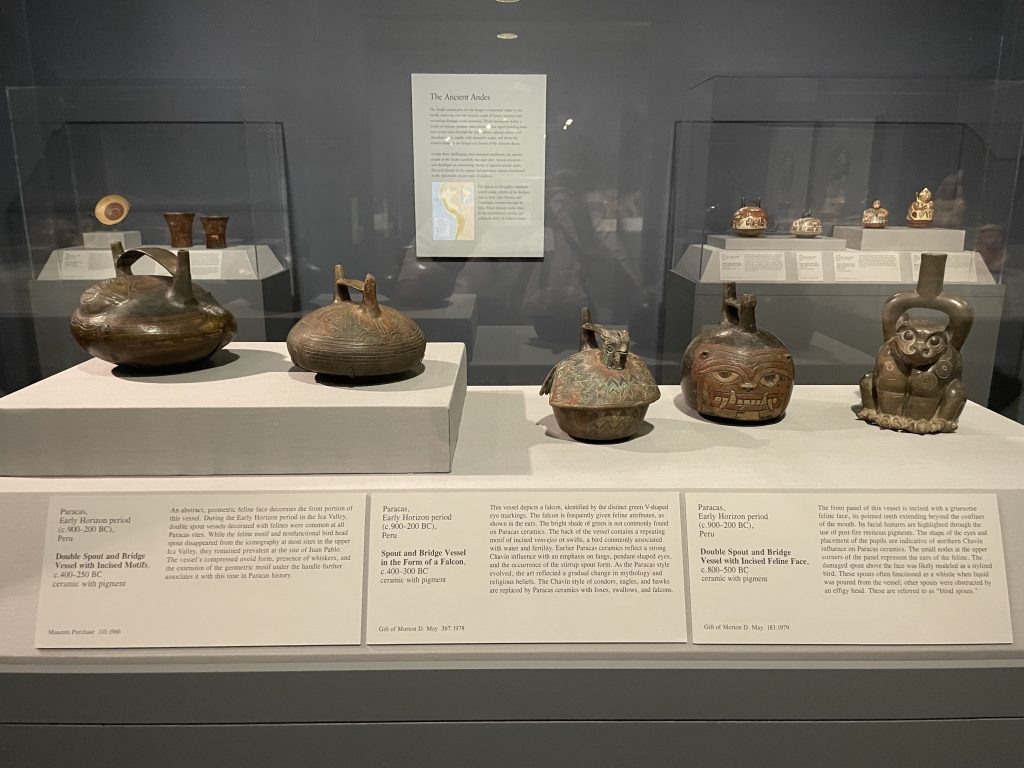
I noticed right away that the bases and stands were all uniform. They were also the same throughout the museum and I appreciated that continuity. The vessels varied in sizes but the exhibit showed them with like sizes in the vitrines. The use of differing sized stands was a successful method to engage more interest in the exhibit while sharing a vitrine.
The room was well utilized and held many vessels. The pedestals were solid, creating a sense of a fuller room. The walls were scarce with information, with there being only one map with regional information about the ancient Andes. The panel of information included different societies such as the Paracas to the Inka. However I saw that other exhibits at SLAM had information adhered directly to the wall, versus being displayed on a panel. I noticed that difference immediately and wished that this room had more color and engaging material.
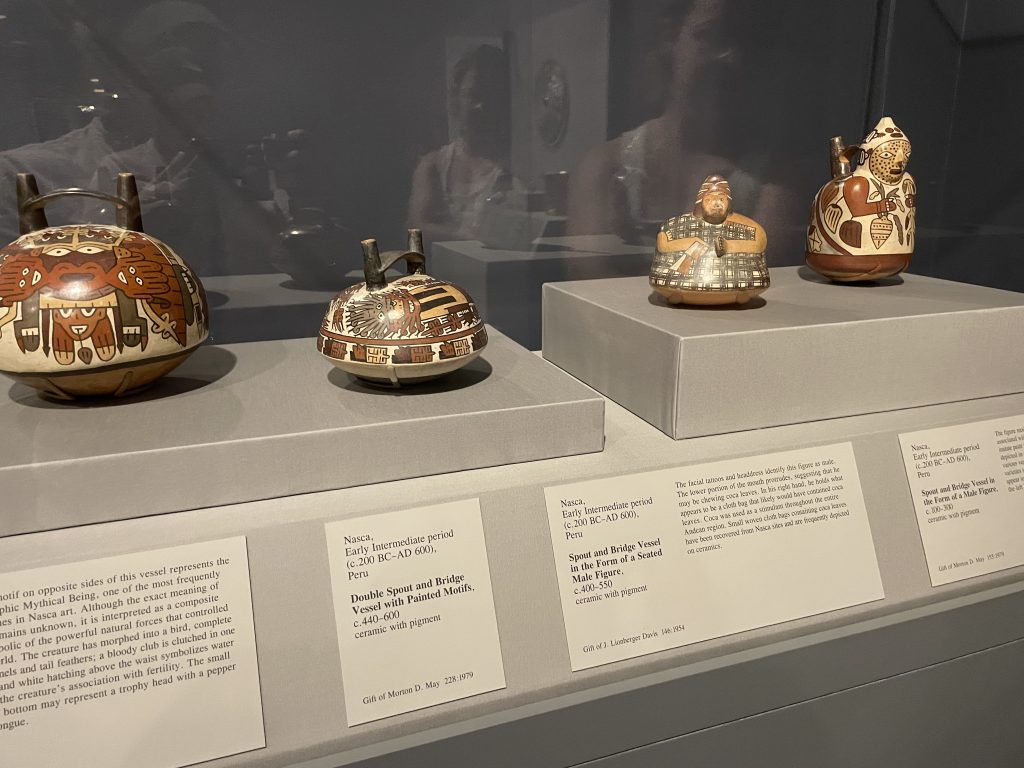
This vitrine held vessels that were more colorful in their design. It also utilized differing stands while sharing an exhibit space. The labels were standard, using a generic and common font and typeface. I understand that these are expertly done, they just didn’t feel as interesting as they could have been. I did not feel an emotional connection to any of the vessels, besides having prior knowledge about them in our current class. The ceramics were intriguing and colorful. Having these vessels from different societies located in the Andes helped the public understand cultural differences in artistry, but also the similarities in their creation.
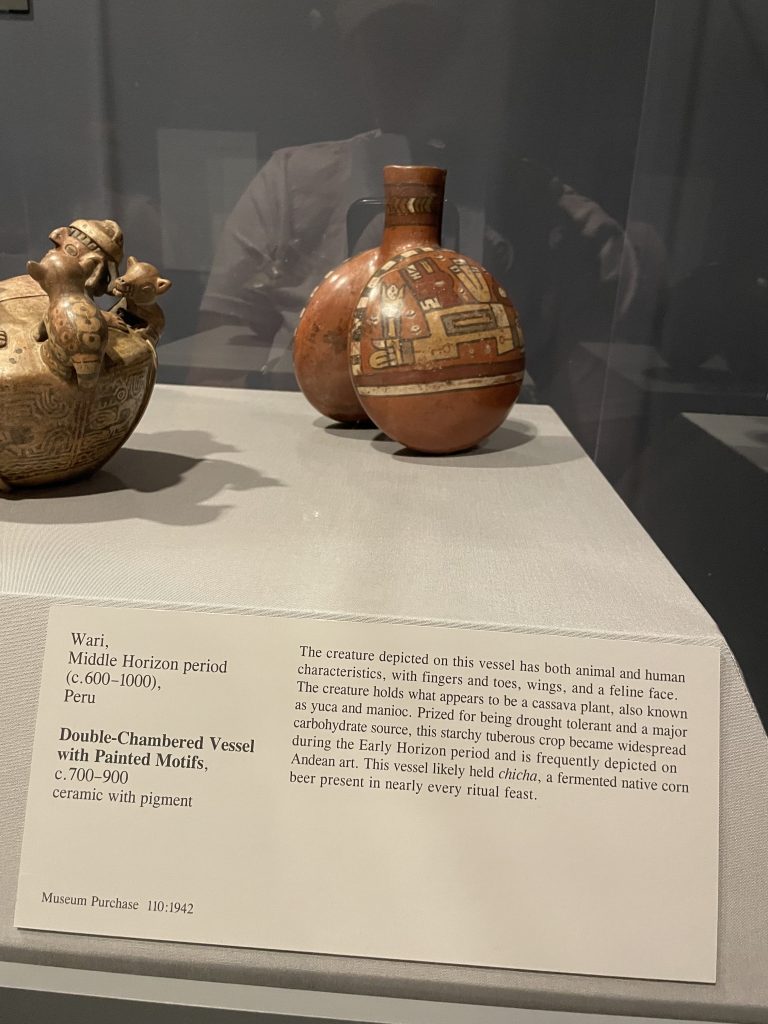
The vitrine pictured above encased two similar vessels but placed them in a staggering manner, instead of aligning them. This made it more interesting to the viewer. Even though they were similar objects sharing a vitrine, they were still able to separate them. Focusing on the Wari vessel, the label reads as an expert created the label. However this being most likely true, to a 12 year old, this label would have been quickly passed. Children and some adults will not understand the words used in this label, especially if one is not knowledgable in this region’s culture. I did pass several children, all varying in age, and thought the art museum to be a boring place for them. I hate having that thought when I am a lover of all museums. To be a child and not be able to touch Roman or modern sculptures must be challenging and frustrating. SLAM did offer coloring and drawing for children in one of their larger rooms on the main floor. This was a great way to engage with children and try and foster a positive museum experience for them while they are young.
This exhibit contributed to my current knowledge of ceramics, by expanding the information on the small labels. They were interesting to read and kept my attention. The different colored vessels along with the Andean artistry told a story of their culture. Very bold and expressive. I had not seen South American vessels of that nature and appreciated the inclusion of them in this exhibit.
There is something for everyone at SLAM and you do not have to be an expert to have an appreciation for the arts. The labels for the South American exhibit read professionally which may be challenging for some. I did like how they read because I felt that the museum did their job as being a place for education. A critique I have for the exhibit is to include more color on the walls, or pictures to make the space more inviting for people to walk through. One enjoyment I can give praise to is the use of the space, they filled is appropriately and creatively. There were private tours full of conversation, groups of families talking about paintings, and laughter. That is the result any museum should strive for.
